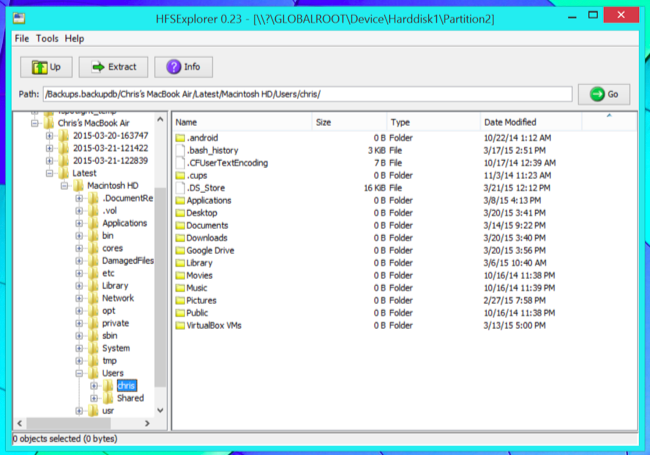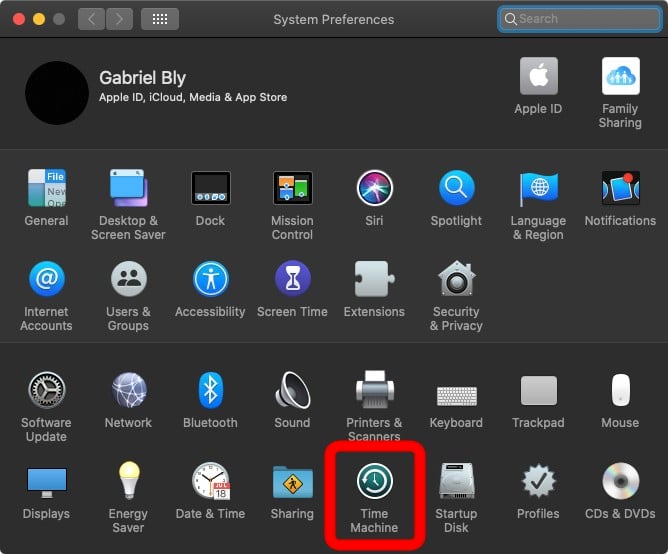
- #MAC TIME MACHINE RESTORE TO WINDOWS HOW TO#
- #MAC TIME MACHINE RESTORE TO WINDOWS FULL VERSION#
- #MAC TIME MACHINE RESTORE TO WINDOWS INSTALL#
- #MAC TIME MACHINE RESTORE TO WINDOWS SOFTWARE#
- #MAC TIME MACHINE RESTORE TO WINDOWS PC#
You can always clean everything up later. You should probably have HFSExplorer follow symbolic links, although this may result in duplicate files. You can then dig through them using normal Windows tools, recovering the files you want and deleting everything you no longer want. HFSExplorer would copy the directories and everything inside to your Windows PC. Or, you could select one of the top-level folders - the “Latest” backup for your entire latest backup or the “Backups.backupdb” folder for every single file in the entire Time Machine backup. For example, you could dig through the Time Machine backups to look for only the important files, select them, and click the Extract button to extract them.

You could also extract individual files or every single backup file. HFSExplorer will extract the files from your Time Machine drive and copy them to your Windows partition. To restore all your personal files to your Windows PC, navigate to this folder, select it, and click the Extract button. You can restore any files you want from the Mac system, but you’ll find your personal files under Macintosh HD/Users/NAME. Under the Latest folder, you’ll probably see a folder named “Macintosh HD” - that’s the Time Machine backup for your Mac’s system drive. Unless you want to restore old, deleted files or previous versions of files, go to the Latest folder. The Latest folder is your most current Time Machine backup.

Under that folder, you’ll see folders named after specific dates and times and a “Latest” folder. This is the folder that contains all the Time Machine backups from that specific Mac. Underneath it, you’ll find a folder with the name of your Mac. Once you’re viewing the contents of your Mac-formatted Time Machine drive in HFSExplorer, you’ll see a folder named “Backups.backupdb”. Restoring Files From Your Time Machine Backups If not, you can select devices manually from the “Detected devices” box until one works. Open the HFSExplorer application after installing it, click the File menu, and select “Load file system from device.” It should auto-detect the appropriate device for you. However, they do offer time-limited trials that will work for a one-time restore process. Both of these are paid applications, and you probably don’t want to purchase them just to recover files one time. If you really can’t stand Java, other possible solutions include Paragon’s HFS+ for Windows and Mediafour’s MacDrive.
#MAC TIME MACHINE RESTORE TO WINDOWS INSTALL#
Watch out for Oracle’s obnoxious installer junkware when you install it, too. Unfortunately, it does require Java installed to function - we recommend uninstalling Java immediately after you’re done with HFSExplorer or at least disabling the Java browser plug-in to help protect yourself. The only free application we’ve found for this is HFSExplorer.
#MAC TIME MACHINE RESTORE TO WINDOWS SOFTWARE#
You’ll need software that can understand the HFS+ file system to access your Time Machine backup files.
#MAC TIME MACHINE RESTORE TO WINDOWS HOW TO#
RELATED: How to Share Files Between Mac OS X and Windows With Boot Camp


Windows can’t read it, but all your files are still there.
#MAC TIME MACHINE RESTORE TO WINDOWS PC#
You can normally share drives between a Mac and Windows PC because Macs also understand the common FAT32 file system, but OS X insists that Time Machine drives be formatted with HFS+.ĭon’t immediately format the drive with a Windows file system or you’ll lose all the Time Machine backups on it. That’s because Windows can’t understand the drive’s HFS+ file system. When you connect the Mac-formatted Time Machine drive to your computer, you won’t see the files on it. Hopefully you’re using a USB drive for Time Machine backups - most Windows PCs aren’t compatible with Thunderbolt.
#MAC TIME MACHINE RESTORE TO WINDOWS FULL VERSION#
You can free download Comodo Time Machine and safe install the latest trial or new full version for Windows 10 (x32, 64 bit, 86) from the official site.RELATED: How to Back Up Your Mac and Restore Files With Time MachineĮither way, the first step is connecting that Mac-formatting Time Machine drive to your Windows computer. When Windows does not boot up during the boot process press Home to all the recovery options of Comodo Time Machine.Ĭomodo Time Machine has the following features: In contrast to the standard system restore feature in Windows, you can with Comodo Time Machine, not to the Windows registry and system files, but also folders with documents, and software programs. Therefore We suggest you to look at another Windows recovery tool that is still actively developed.Ĭomodo Time Machine is free Windows recovery software. UPDATE: The software Comodo Time Machine was last updated in July 2010. In Windows is a standard function for system restore, but the free Comodo Time Machine offers more extensive possibilities. All the settings and documents with such a program restore to the situation as it was at a specific point in time. A Windows system restore program makes it possible to restore the computer to an earlier time.


 0 kommentar(er)
0 kommentar(er)
